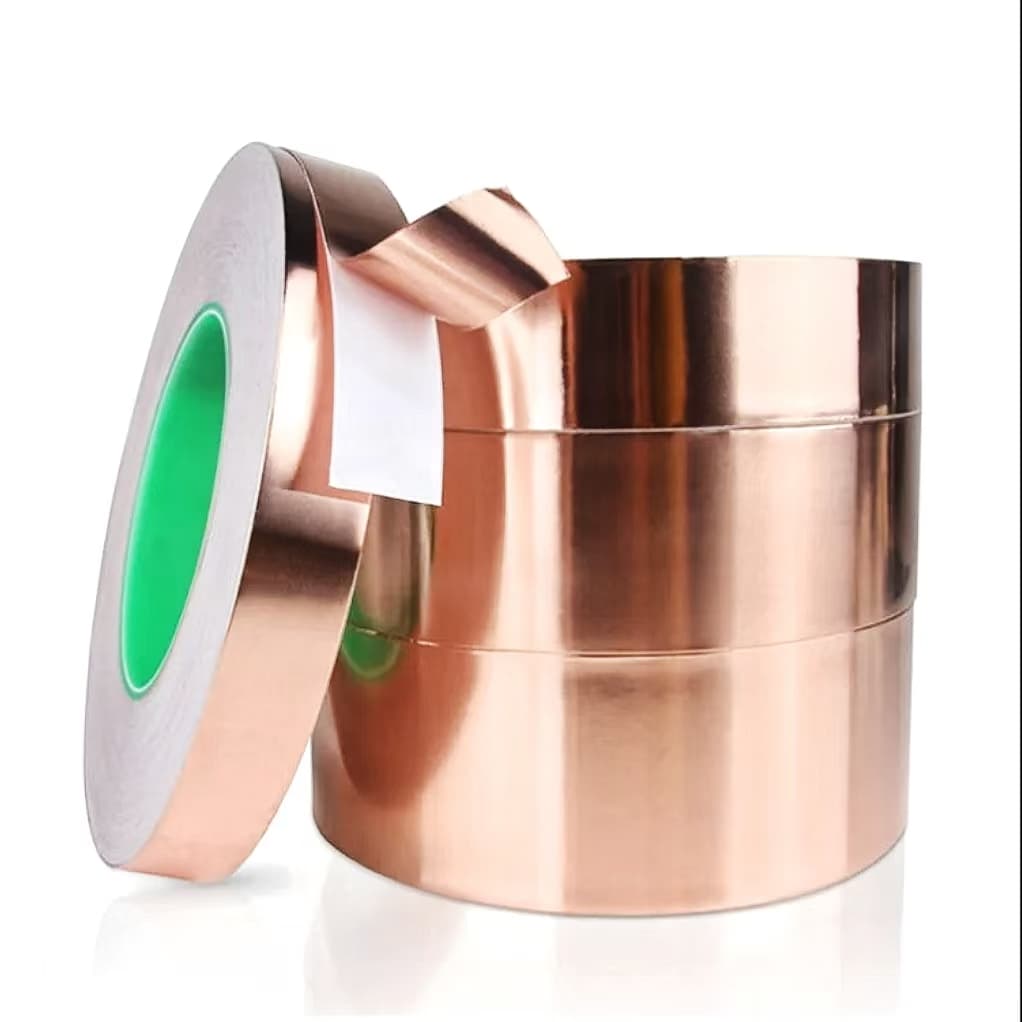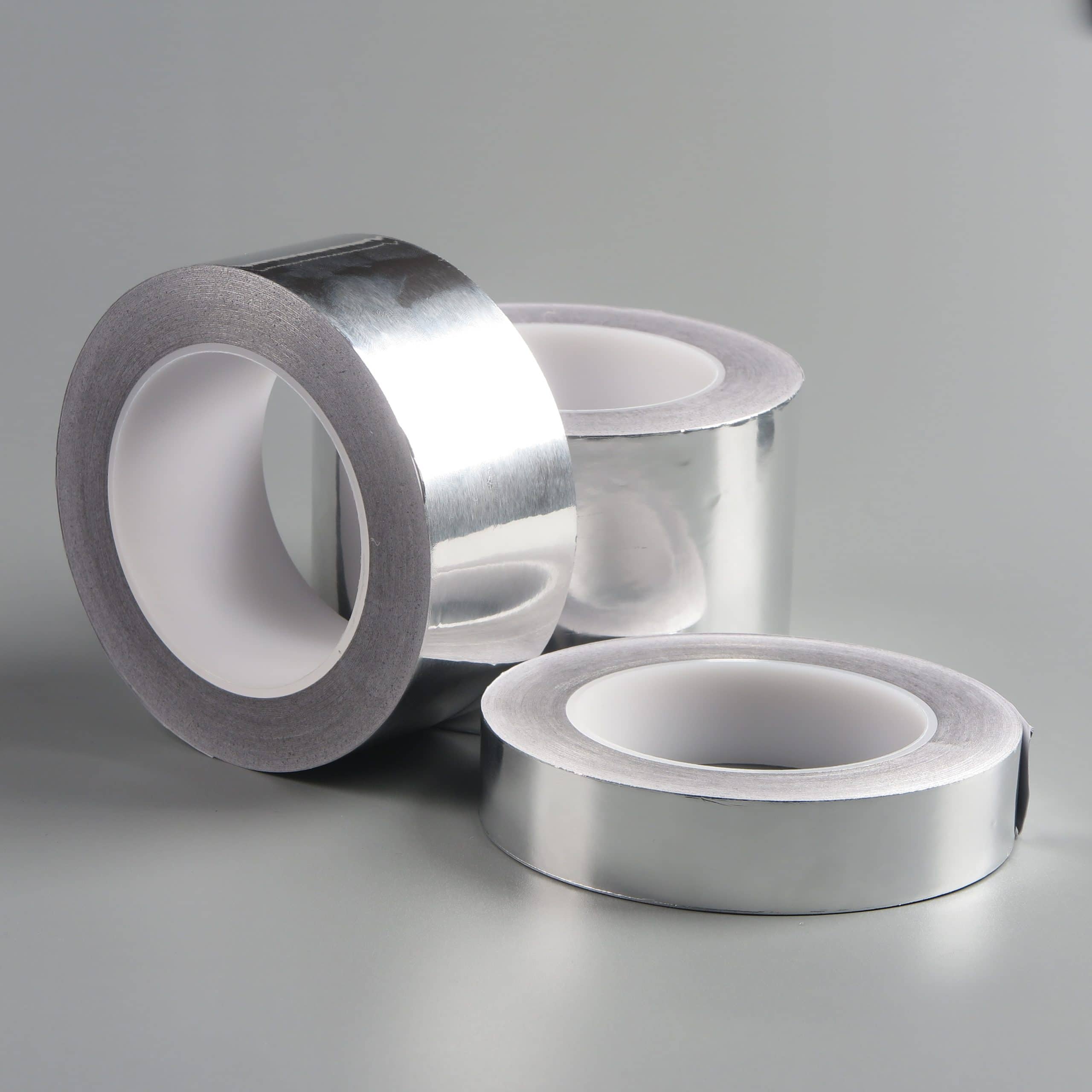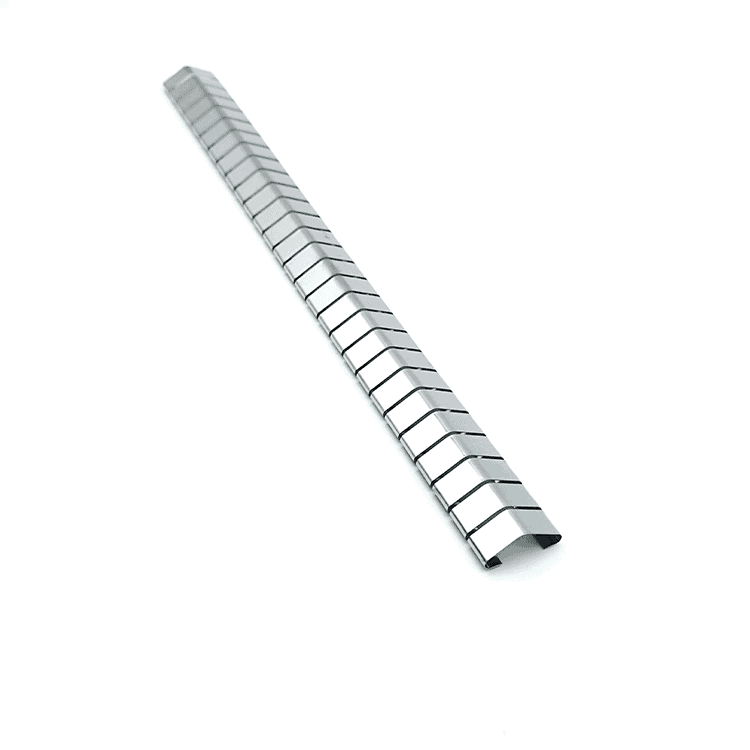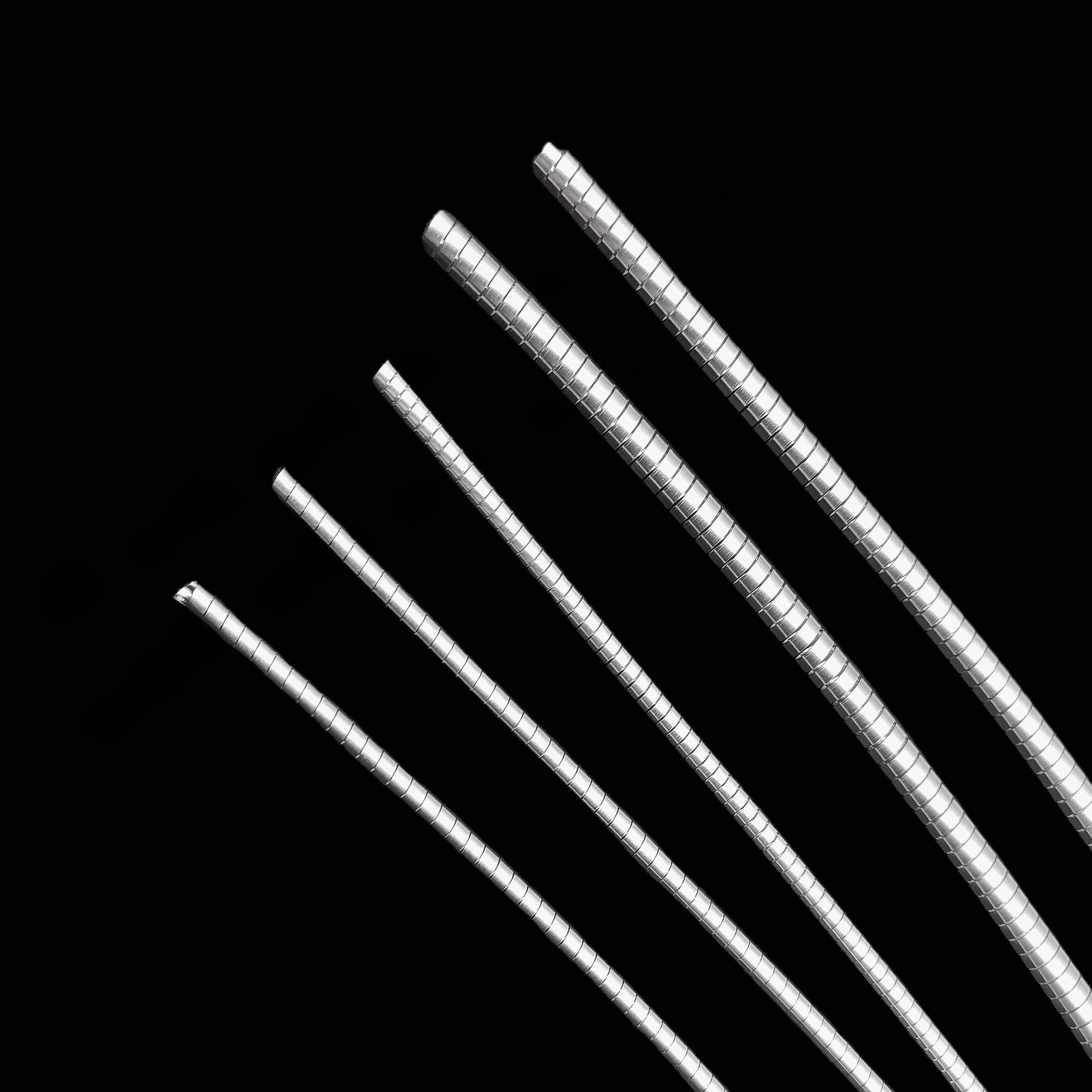Hoher EMI-Abschirmungseffekt Aufschnappbare Montagefingerleisten
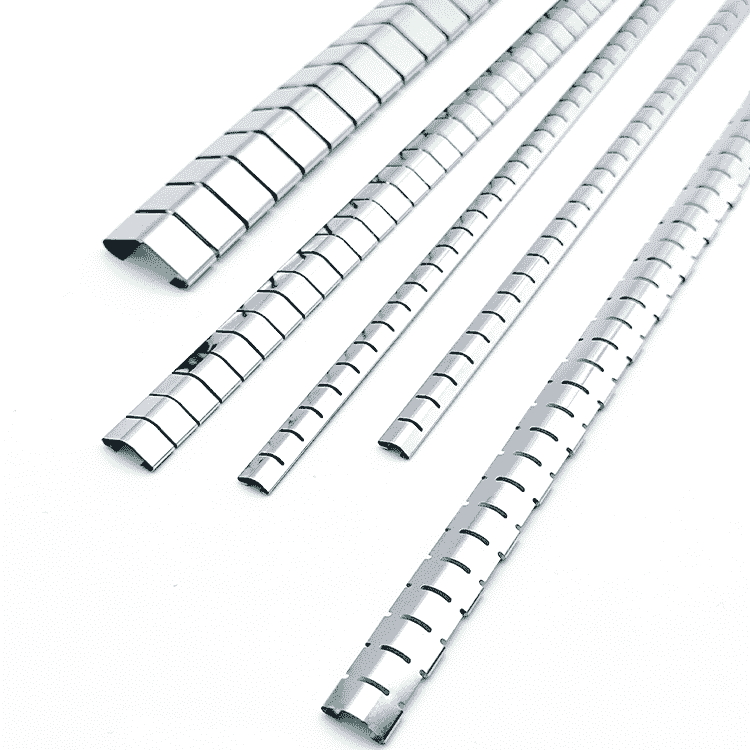

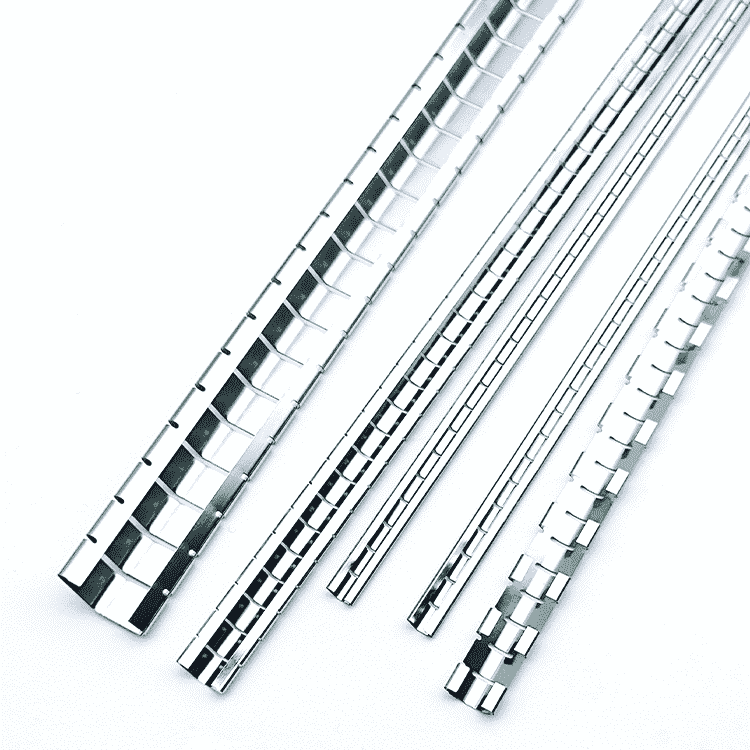
Aufschnappbare Montage-Fingerstrips sind hochwirksame Komponenten zur Abschirmung elektromagnetischer Störungen (EMI), die in verschiedenen Elektronikgehäusen und -baugruppen verwendet werden, um die elektromagnetische Integrität zu gewährleisten und Hochfrequenzstörungen (RFI) zu verhindern. Mit der Weiterentwicklung elektronischer Systeme ist die EMI-Abschirmung für die Aufrechterhaltung der Funktionalität und Leistung empfindlicher elektronischer Geräte entscheidend geworden. Snap-on-Montage-Fingerstrips sind für eine einfache Installation, Flexibilität und effiziente Abschirmung ausgelegt, was sie zu einer beliebten Wahl in zahlreichen Branchen macht, darunter Telekommunikation, Militär, Luft- und Raumfahrt, Automobil und Unterhaltungselektronik.
Aufschnappbare Montage-Fingerstrips sind hochwirksame Komponenten zur Abschirmung elektromagnetischer Störungen (EMI), die in verschiedenen Elektronikgehäusen und -baugruppen verwendet werden, um die elektromagnetische Integrität zu gewährleisten und Hochfrequenzstörungen (RFI) zu verhindern. Mit der Weiterentwicklung elektronischer Systeme ist die EMI-Abschirmung für die Aufrechterhaltung der Funktionalität und Leistung empfindlicher elektronischer Geräte entscheidend geworden. Snap-on-Montage-Fingerstrips sind für eine einfache Installation, Flexibilität und effiziente Abschirmung ausgelegt, was sie zu einer beliebten Wahl in zahlreichen Branchen macht, darunter Telekommunikation, Militär, Luft- und Raumfahrt, Automobil und Unterhaltungselektronik.
Dieser Artikel befasst sich ausführlich mit Schnappmontage-Fingerstrips, wobei der Schwerpunkt auf ihren wichtigsten Merkmalen, Materialien, Installationsmethoden, Anwendungen und Vorteilen liegt. Darüber hinaus wird untersucht, warum aufschnappbare Montagefingerleisten eine wesentliche Komponente in der modernen Elektronik sind und wie sie die Anforderungen der EMI/RFI-Abschirmung erfüllen.
Inhaltsübersicht
Was sind Snap-On-Montage-Fingerstrips?
Aufschnappbare Montage-Fingerstrips sind flexible EMI-Abschirmdichtungen aus Materialien wie Berylliumkupfer, Phosphorbronze oder anderen leitfähigen Legierungen. Sie sind speziell dafür ausgelegt, einen sicheren elektrischen Kontakt herzustellen und eine wirksame Barriere gegen elektromagnetische Störungen zu bilden. Snap-on Fingerstrips werden in Nuten oder Bahnen in elektronischen Gehäusen installiert und ermöglichen eine einfache Integration mit verschiedenen Komponenten.
Diese Fingerstrips sind mit einem Snap-on-Design Dies vereinfacht die Installation, da nur ein leichter Druck erforderlich ist, um sie sicher zu befestigen. Diese Eigenschaft macht sie besonders nützlich in Baugruppen, bei denen der Zugang zu internen Komponenten erforderlich ist, ohne die Abschirmungsleistung zu beeinträchtigen.
Hauptmerkmale der Snap-On-Montage-Fingerstrips
1. Niedrige Kompressionskraft
Einer der Hauptvorteile von Schnappmontage-Fingerstrips ist ihre geringe Kompressionskraft. Im Gegensatz zu einigen anderen EMI-Abschirmungslösungen, die einen erheblichen Kraftaufwand für die Installation erfordern, müssen diese Fingerstrips nur mit minimalem Druck zusammengedrückt werden, was sie ideal für den Einsatz in Gleitanwendungen macht. Die geringe Kompressionskraft trägt dazu bei, die Lebensdauer sowohl der Dichtung als auch der angrenzenden Oberflächen zu verlängern, indem sie den Verschleiß bei wiederholter Montage und Demontage verringert.
2. Symmetrisches Design
Schnappmontage-Fingerstrips weisen häufig ein symmetrisches Design auf, das einen beidseitigen Kontakt zwischen dem Fingerstrip und der Gehäuseoberfläche ermöglicht. Dieses Merkmal gewährleistet eine kontinuierliche Abschirmungsverbindung über eine Vielzahl von Oberflächen und verbessert die Gesamtwirkung der Abschirmung. Das symmetrische Design erleichtert auch den korrekten Einbau der Streifen, da keine spezielle Ausrichtung erforderlich ist.
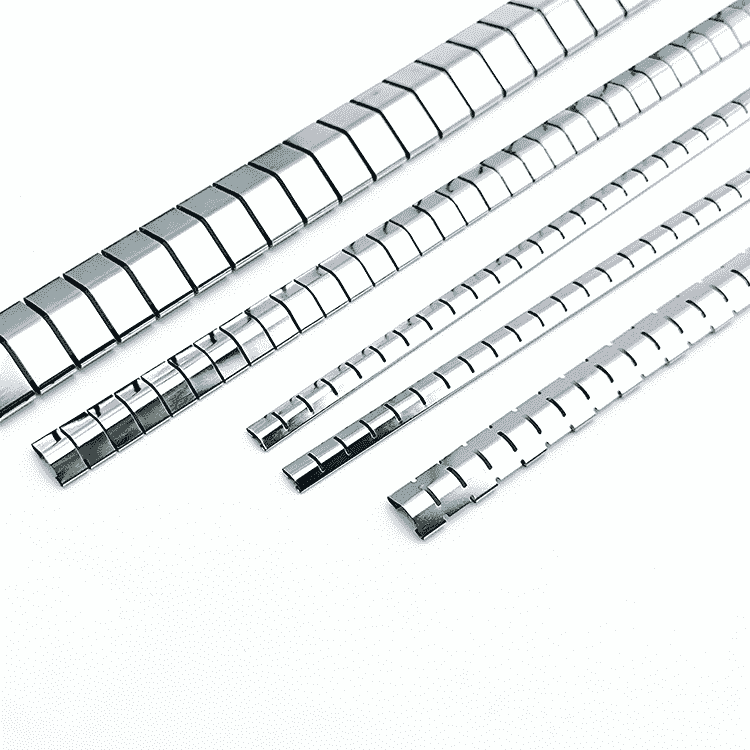
3. Hohe EMI/RFI-Abschirmungseffizienz
Als EMI-Abschirmungslösung sind die aufschnappbaren Fingerstrips äußerst wirksam bei der Abschirmung von elektromagnetischen Störungen (EMI) und Hochfrequenzstörungen (RFI). Diese Abschirmungskomponenten schaffen einen elektrischen Erdungspfad und eine physische Barriere, die verhindert, dass elektromagnetische Wellen in das Gehäuse eindringen oder es verlassen. Diese Fähigkeit ist besonders wichtig für empfindliche elektronische Geräte und Systeme, die auf klare und genaue Signale angewiesen sind.
4. Langlebigkeit und Materialstärke
Schnappmontage-Fingerstrips werden in der Regel aus robusten Materialien hergestellt, wie z. B. Berylliumkupfer oder andere Kupferlegierungen. Berylliumkupfer ist bekannt für seine hohe Leitfähigkeit, Festigkeit und Korrosionsbeständigkeit, was es zu einem idealen Material für die EMI-Abschirmung in anspruchsvollen Umgebungen macht. Diese Beständigkeit stellt sicher, dass die Schnappfingerleisten einer wiederholten Verwendung standhalten können, ohne ihre Abschirmwirkung zu verlieren.
5. Vielseitige Anwendung
Dank ihrer Vielseitigkeit können Schnappmontage-Fingerstrips in einer Vielzahl von elektronischen Gehäusen und Baugruppen eingesetzt werden. Dank ihrer Flexibilität und der einfachen Installation eignen sie sich für Anwendungen, bei denen Platten, Türen und Abdeckungen in verschiedenen elektronischen Geräten und Schränken häufig geöffnet und geschlossen werden.
Arten von Snap-On-Montage-Fingerstrips
Snap-on-Montage-Fingerstrips sind in verschiedenen Konfigurationen und Materialien erhältlich, die auf die spezifischen Anforderungen der verschiedenen Anwendungen zugeschnitten sind. Zu den gängigen Typen gehören:
1. Leitfähige Berylliumkupfer-Fingerlinge
Dies sind die gebräuchlichsten Schnapp-Fingerstrips, hergestellt aus Berylliumkupferdas sich durch hervorragende elektrische Leitfähigkeit und Widerstandsfähigkeit auszeichnet. Berylliumkupfer-Fingerstrips werden häufig in Hochleistungsanwendungen eingesetzt, die eine gleichmäßige Abschirmung auch unter extremen Umweltbedingungen erfordern.
2. Verzinnte Fingerstrips
Einige Schnappmontage-Fingerstrips werden mit VerzinnungDies verbessert die Korrosionsbeständigkeit und erhöht die Fähigkeit des Bandes, einen starken elektrischen Kontakt mit den Gehäuseoberflächen herzustellen. Verzinnte Fingerstrips werden häufig für Anwendungen im Freien oder in Umgebungen gewählt, in denen Feuchtigkeit und andere korrosive Elemente vorhanden sind.
3. Clip-On Fingerstrips mit doppelseitigem Kleber
Für anspruchsvollere oder spezialisierte Anwendungen können Schnappmontage-Fingerstrips geliefert werden mit doppelseitig klebend oder auf Messingschienen mit Kleberückseite montiert. Dieser Klebstoff erleichtert die schnelle Montage und sorgt für zusätzliche Haltekraft. In einigen Fällen können die Fingerstrips eingekerbt werden, damit sie sich nach der Montage leicht lösen lassen.
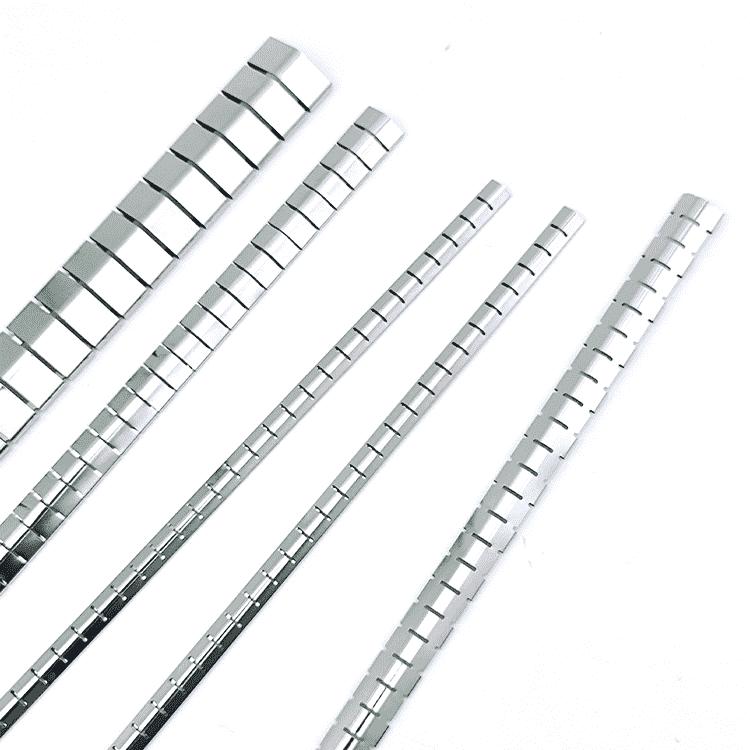
Einbaumethode für Snap-On-Montage-Fingerstrips
Eines der wichtigsten Verkaufsargumente für die Schnappmontage Fingerabdrücke ist ihre einfache Installation. Dank ihrer Schnappfunktion können sie schnell und einfach installiert werden, indem sie in eine Nut oder Schiene entlang des Gehäuserandes gedrückt werden.
Schritt-für-Schritt-Installationsprozess:
- Vorbereitung: Vergewissern Sie sich, dass die Nut oder Schiene, in der der Fingerabdruckstreifen installiert wird, sauber und frei von Verunreinigungen ist.
- Positionierung: Halten Sie die Kante der Schnappleiste in eine der Rillen oder Kanten des Gehäuses.
- Snap-On: Drücken Sie den Streifen mit leichtem Druck in Richtung der zweiten Rille, bis der Fingerstrip sicher einrastet.
- Sicherer Kontakt: Nach dem Einrasten stellt der Streifen einen kontinuierlichen Kontakt entlang der Oberfläche her und bietet eine wirksame EMI-Abschirmung.
Allgemeine Anwendungen von Snap-On-Montage-Fingerstrips
Aufgrund ihrer überragenden EMI/RFI-Abschirmungseigenschaften und der einfachen Installation werden Fingerstrips zur Schnappmontage in einer Vielzahl von Anwendungen eingesetzt. Sie sind besonders nützlich in Umgebungen, in denen elektronische Komponenten und Baugruppen häufig zugänglich gemacht oder gewartet werden müssen, ohne die EMI-Abschirmung zu beeinträchtigen.
1. Griffe an der Frontplatte
Einrastende Fingerabdrücke werden häufig in den Griffen der Frontplatte verwendet, um den EMI-Schutz zu gewährleisten und gleichzeitig einen einfachen Zugang zu den internen Komponenten des Gehäuses zu ermöglichen.
2. Abgeschirmte Gehäuse und Türen
In geschirmten Gehäusen bilden aufschnappbare Fingerstrips eine durchgehende EMI-Barriere um Türen oder Zugangspunkte. Sie verhindern, dass elektromagnetische Störungen in das Gehäuse eindringen oder es verlassen, wenn die Tür geschlossen ist. Das macht sie unverzichtbar für Geräte, die strenge EMV-Normen (elektromagnetische Verträglichkeit) erfüllen müssen.
3. Schiebemulden und Einschübe
Bei Elektronikschränken oder Geräten mit Schiebetabletts oder Einschüben sorgen die aufschnappbaren Montage-Fingerstrips für eine gleichbleibende EMI-Abschirmung auch bei Bewegungen. Dies macht sie zu einer zuverlässigen Lösung für Systeme, die ein häufiges Einsetzen und Entfernen von Komponenten erfordern.
4. Racks und Kommunikationsschränke
Telekommunikationssysteme, Server und andere Datenkommunikationsgeräte, die in Racks oder Kommunikationsschränken untergebracht sind, profitieren von der EMI-Abschirmung durch aufschnappbare Fingerstrips. Diese Streifen schützen die empfindlichen elektronischen Komponenten vor externen Störungen, gewährleisten die Datenintegrität und minimieren den Signalverlust.

Materialoptionen für Snap-On-Montage-Fingerstrips
Das Material, aus dem die Fingerabdrücke für die Schnappmontage hergestellt werden, spielt eine wichtige Rolle bei der Bestimmung ihrer Wirksamkeit, Haltbarkeit und Eignung für bestimmte Umgebungen. Hier sind die am häufigsten verwendeten Materialien:
1. Beryllium-Kupfer
Beryllium-Kupfer ist aufgrund seiner hervorragenden elektrischen Leitfähigkeit, hohen Festigkeit und Korrosionsbeständigkeit ein bevorzugtes Material. Es eignet sich gut für Hochfrequenz-EMI-Abschirmungsanwendungen und kann rauen Betriebsbedingungen, einschließlich extremer Temperaturen, standhalten.
2. Phosphor Bronze
Phosphorbronze ist ein weiteres Material, das für Fingerleisten zur Schnappmontage verwendet wird und für seine gute Leitfähigkeit und Verschleißfestigkeit bekannt ist. Es wird häufig in Anwendungen eingesetzt, bei denen neben der EMI-Abschirmung auch die mechanische Beständigkeit eine wichtige Rolle spielt.
3. Rostfreier Stahl
In Umgebungen, in denen Korrosionsbeständigkeit und Langlebigkeit von größter Bedeutung sind, können einrastende Fingerabdruckstreifen aus Edelstahl verwendet werden. Edelstahl ist weniger leitfähig als Kupferlegierungen, bietet aber eine höhere Oxidationsbeständigkeit und eignet sich daher ideal für Anwendungen im Freien oder auf See.
4. Verzinnte Legierungen
In Fällen, in denen Korrosionsbeständigkeit und ein verbesserter elektrischer Kontakt erforderlich sind, können die Schnappmontage-Fingerstrips verzinnt werden. Diese zusätzliche Schutzschicht gewährleistet eine langfristige Leistung in Umgebungen, in denen Feuchtigkeit oder ätzende Chemikalien vorhanden sein können.

Vorteile der Verwendung von Snap-On-Montage-Fingerstrips
Snap-on-Montage-Fingerstrips bieten zahlreiche Vorteile, die sie zu einem unverzichtbaren Bestandteil in einer Vielzahl von elektronischen und industriellen Anwendungen machen.
1. Einfache Installation
Das Schnappdesign vereinfacht die Installation und macht komplexe Werkzeuge oder Montagemechanismen überflüssig. Diese Eigenschaft ist besonders nützlich für Anwendungen, die einen häufigen Zugang zu geschlossenen Komponenten erfordern, da die Fingerstrips leicht wieder angebracht werden können, ohne ihre Wirksamkeit zu verlieren.
2. Niedrige Kompressionskraft
Da nur eine minimale Druckkraft erforderlich ist, verringern Schnappmontage-Fingerstrips den Verschleiß sowohl der Dichtung als auch des Gehäuses. Dies gewährleistet eine längere Lebensdauer und macht sie für Anwendungen geeignet, die wiederholte Bewegungen oder Montagen erfordern.
3. Wirksame EMI/RFI-Abschirmung
Schnappmontage-Fingerstrips bieten robuste EMI/RFI-Abschirmung über einen breiten Frequenzbereich. Ihre Fähigkeit, einen durchgehenden elektrischen Erdungspfad und eine physische Barriere zu schaffen, stellt sicher, dass elektronische Geräte vor unerwünschten Störungen geschützt sind.
4. Vielseitige Anwendung
Von der Automobilelektronik bis zu Kommunikationssystemen können Snap-on-Fingerstrips in verschiedenen Branchen eingesetzt werden. Dank ihrer Vielseitigkeit können sie in zahlreiche Konfigurationen integriert werden, was sie zu einer flexiblen Lösung für moderne Abschirmungsanforderungen macht.
5. Dauerhaftigkeit
Snap-on-Fingerstrips sind so konstruiert, dass sie rauen Umgebungen standhalten und ihre Abschirmungseigenschaften auch unter schwierigen Bedingungen wie hohen Temperaturen, hoher Luftfeuchtigkeit oder korrosiven Umgebungen intakt bleiben.
Schlussfolgerung: Schnappmontage von Fingerstrips in der EMI-Abschirmung
Schnappmontage-Fingerstrips sind wesentliche Komponenten in EMI-Abschirmungslösungen in vielen Branchen. Ihre einfache Installation, geringe Druckkraft und effektive Abschirmung machen sie zur ersten Wahl für Ingenieure und Hersteller, die mit empfindlichen elektronischen Systemen arbeiten. Durch die Verwendung langlebiger Materialien wie Berylliumkupfer, Phosphorbronze und Edelstahl bieten Snap-on-Fingerstrips lang anhaltenden Schutz und erhalten die elektromagnetische Integrität von Geräten selbst in den anspruchsvollsten Umgebungen.
Ihre Rolle in der Automobil-, Luft- und Raumfahrt-, Verteidigungs-, Telekommunikations- und Unterhaltungselektronik nimmt weiter zu, da die EMI/RFI-Abschirmung immer wichtiger wird, um Störungen zu verhindern und den reibungslosen Betrieb elektronischer Geräte zu gewährleisten. Mit ihren vielseitigen Anwendungsmöglichkeiten und ihrer zuverlässigen Leistung bleiben die Fingerstrips zur Schnappmontage ein Eckpfeiler der modernen EMI-Abschirmungstechnologien.
Das könnte Ihnen auch gefallen
-
 Äußerst vielseitiges und unverzichtbares leitfähiges Kupferfolienband
Äußerst vielseitiges und unverzichtbares leitfähiges KupferfolienbandEMI-Bänder, EMC-Folien, leitfähige Textilien und halbleitende Vliese
Kupferfolienband
Leitfähiges Kupferfolienband ist ein äußerst vielseitiges und unverzichtbares Material, das in vielen Branchen von der Elektronik bis zur Automobilindustrie eingesetzt wird. Seine einzigartige Kombination aus elektrischer Leitfähigkeit und Klebeeigenschaften macht es zu einer effizienten Lösung für verschiedene Anwendungen, insbesondere zur Abschirmung, Erdung und Stromleitung zwischen Komponenten. Dieser umfassende Leitfaden befasst sich mit den wichtigsten Merkmalen, Anwendungen, Typen, Eigenschaften, Leistungen und Branchen, in denen leitfähiges Kupferfolienband eine entscheidende Rolle spielt. Hauptmerkmale von leitfähigem KupferfolienbandTypen von leitfähigem KupferfolienbandAnwendungen von leitfähigem KupferfolienbandEigenschaften und Leistung von leitfähigem KupferfolienbandBerücksichtigungen bei der Auswahl von leitfähigem KupferfolienbandLeitfähiges Kupferfolienband Hauptmerkmale von leitfähigem Kupferfolienband Leitfähiges Kupferfolienband wurde entwickelt, um die hohen Anforderungen moderner elektronischer und industrieller Anwendungen zu erfüllen. Nachfolgend sind seine wichtigsten Merkmale aufgeführt: 1. Elektrische Leitfähigkeit Einer der Hauptvorteile von leitfähigem Kupferfolienband ist seine ausgezeichnete elektrische Leitfähigkeit. Da Kupfer eines der leitfähigsten Materialien ist, können elektrische Signale effizient über Oberflächen fließen. Dies macht das Band zu einem unverzichtbaren Bestandteil bei Anwendungen, die eine Erdung, EMI-Abschirmung (elektromagnetische Interferenz) oder die Übertragung elektrischer Signale zwischen zwei oder mehreren Komponenten erfordern. 2. Chemische Beständigkeit Leitfähige Kupferfolie......
-
 Elektrische Leitfähigkeit Alufolienband
Elektrische Leitfähigkeit AlufolienbandEMI-Bänder, EMC-Folien, leitfähige Textilien und halbleitende Vliese
Leitfähiges Aluminiumband
Elektrisch leitfähiges Aluminiumfolienband ist ein vielseitiges und unverzichtbares Material in verschiedenen Branchen, insbesondere in der Elektronik, Elektrotechnik und im Bauwesen. Dieser Artikel befasst sich eingehend mit den Eigenschaften, Anwendungen, Vorteilen und Auswahlkriterien für Aluminiumfolienband mit elektrischer Leitfähigkeit, wobei der Schwerpunkt darauf liegt, warum es für die Gewährleistung der elektrischen Kontinuität, Abschirmung und Erdung unverzichtbar ist. https://www.handashielding.com/contact-us.html Was ist Aluminiumfolienband mit elektrischer Leitfähigkeit?Wichtige Eigenschaften von Aluminiumfolienband mit elektrischer LeitfähigkeitAnwendungen von Aluminiumfolienband mit elektrischer LeitfähigkeitVorteile der Verwendung von Aluminiumfolienband mit elektrischer LeitfähigkeitAuswahlkriterien für Aluminiumfolienband mit elektrischer LeitfähigkeitAbschluss Was ist Aluminiumfolienband mit elektrischer Leitfähigkeit? Elektrisch leitfähiges Aluminiumfolienband ist ein spezielles Klebeband, das aus dünner Aluminiumfolie besteht, die mit einem elektrisch leitfähigen Klebstoff beschichtet ist. Dieses Klebeband ist so konzipiert, dass es über seine Oberfläche und durch seinen Klebstoff eine ausgezeichnete Leitfähigkeit bietet, was es ideal für Anwendungen macht, die zuverlässige elektrische Verbindungen und Abschirmungen erfordern. Die Aluminiumfolie bietet eine leitfähige Oberfläche, während der Klebstoff dafür sorgt, dass das Band fest auf verschiedenen Substraten haftet und dabei die elektrische Leitfähigkeit beibehält. Wichtige Eigenschaften von Aluminiumfolienband mit elektrischer Leitfähigkeit 1. Elektrische Leitfähigkeit Das wichtigste Merkmal von Aluminiumfolienband ist seine hervorragende elektrische Leitfähigkeit. Sowohl die Aluminiumfolie als auch der leitfähige Klebstoff sind so konzipiert, dass sie den Strom......
-
 Hohe Abschirmeffektivität EMI-Abschirmung Fingerstockdichtungen
Hohe Abschirmeffektivität EMI-Abschirmung FingerstockdichtungenEMI/EMC-Abschirmung | RFI-Abschirmung | EMI-Dichtungen
Fingerabdrücke
In der heutigen, immer komplexer werdenden Elektroniklandschaft ist die Abschirmung elektromagnetischer Störungen (EMI) für Gerätehersteller und -entwickler zu einem wichtigen Thema geworden. Eine effektive Lösung für EMI-Probleme ist die Verwendung von hochwirksamen EMI-Abschirmungs-Fingerstock-/Fingerstrip-Dichtungen. Diese speziellen Komponenten spielen eine wichtige Rolle beim Schutz elektronischer Geräte vor unerwünschter elektromagnetischer Strahlung und bei der Aufrechterhaltung der elektromagnetischen Verträglichkeit (EMV). Was ist EMI-Abschirmung?Die Rolle von EMI-abschirmenden Fingerstock-DichtungenVorteile einer hohen Abschirmwirkung EMI-abschirmende Fingerstock-DichtungenKonstruktion und Materialien einer hohen Abschirmwirkung EMI-abschirmende Fingerstock-DichtungenAnwendungen einer hohen Abschirmung Wirksamkeit EMI-Abschirmung von Fingerstock-DichtungenLeistungskennzahlen von Fingerstock-DichtungenHerausforderungen und ÜberlegungenZukunftstrends in der EMI-AbschirmungFallstudien zur Wirksamkeit der EMI-Abschirmung von Fingerstock-DichtungenAbschluss Was ist EMI-Abschirmung? Unter elektromagnetischer Interferenz (EMI) versteht man die Störung elektronischer Schaltungen und Systeme durch elektromagnetische Strahlung von außen. Diese Störung kann sich als Rauschen, Signalverschlechterung oder komplette Systemfehlfunktionen äußern. EMI kann von einer Vielzahl von Quellen erzeugt werden, darunter elektrische Geräte, Kommunikationssysteme und sogar natürliche Phänomene. Um EMI zu bekämpfen, werden Abschirmungstechniken eingesetzt, um elektromagnetische Wellen zu blockieren oder abzuschwächen. Bei der EMI-Abschirmung wird eine Barriere geschaffen, die verhindert, dass die Störung in empfindliche Bereiche von elektronischen Geräten eindringt. Eine wirksame EMI-Abschirmung gewährleistet......
-
Rechtwinklige Abschirmfingerleisten/Winkelfingerschäfte
EMI/EMC-Abschirmung | RFI-Abschirmung | EMI-Dichtungen
Fingerabdrücke
Einführung Fingerstrips zur rechtwinkligen Abschirmung, auch bekannt als abgewinkelte Fingerstrips, sind spezialisierte Komponenten, die dazu dienen, elektromagnetische Störungen (EMI) und Hochfrequenzstörungen (RFI) in elektronischen Systemen zu vermeiden. Diese Fingerstrips sind besonders nützlich in Konfigurationen, in denen sich elektronische Komponenten in einem 90-Grad-Winkel kreuzen. Ihre Hauptaufgabe besteht darin, eine wirksame Abschirmung zu gewährleisten, die elektromagnetische Verträglichkeit (EMV) zu erhalten und empfindliche elektronische Geräte vor Störungen zu schützen. EinführungDesign und FunktionalitätSpezifikationen und MaterialienInstallationserwägungenHerstellungsprozessVorteileAbschlussDesign und FunktionalitätZweck und Bedeutung Der Hauptzweck von rechtwinkligen Abschirmungs-Fingerstrips besteht darin, eine zuverlässige EMI/RFI-Abschirmung in elektronischen Aufbauten mit rechtwinkligen Komponentenanordnungen zu gewährleisten. Bei elektronischen Geräten mit rechtwinklig ausgerichteten Komponenten sind herkömmliche Abschirmungslösungen aufgrund von Lücken oder unvollständiger Abdeckung möglicherweise nicht wirksam. Die rechtwinkligen Fingerstrips lösen dieses Problem, indem sie eine kontinuierliche Abschirmung über diese winkligen Verbindungen gewährleisten, was für die Aufrechterhaltung der Leistung und Zuverlässigkeit elektronischer Systeme entscheidend ist. Anwendungen Fingerstrips mit rechtwinkliger Abschirmung werden in einer Vielzahl von Anwendungen eingesetzt: Computer-Hardware: Zur Abschirmung kritischer interner Komponenten vor elektromagnetischen Emissionen, die Betriebsstörungen oder Datenverluste verursachen könnten. Telekommunikationsgeräte: Um Signalstörungen zu verhindern und die Integrität von Kommunikationssystemen zu gewährleisten. Kfz-Elektronik: Zum Schutz empfindlicher elektronischer Steuersysteme vor EMI, die die Fahrzeugleistung beeinträchtigen könnten. Abgeschirmte Gehäuse:......
-
 RF/EMI-Abschirmspiraldichtungen: Wesentliche Komponenten für elektromagnetische Verträglichkeit
RF/EMI-Abschirmspiraldichtungen: Wesentliche Komponenten für elektromagnetische VerträglichkeitEMI/EMC-Abschirmung | RFI-Abschirmung | EMI-Dichtungen
RF/EMI-Abschirmung Spiralförmige Dichtung
In der heutigen vernetzten Welt der Elektronik und Telekommunikation ist die Aufrechterhaltung der elektromagnetischen Verträglichkeit (EMV) entscheidend für die optimale Leistung und Zuverlässigkeit elektronischer Geräte. RF/EMI Shield Spiraldichtungen spielen eine entscheidende Rolle bei der Erreichung dieses Ziels, indem sie elektromagnetische Interferenzen (EMI), die die Signalintegrität und Funktionalität stören können, wirksam abschwächen. Was sind RF/EMI Shield Spiraldichtungen?Hauptmerkmale und VorteileAnwendungen in verschiedenen Branchen Was sind RF/EMI Shield Spiraldichtungen? RF/EMI-Shield-Spiraldichtungen sind spezielle Komponenten, die eine robuste Abschirmung gegen elektromagnetische Strahlung bieten. Sie bestehen in der Regel aus leitfähigen Materialien wie Metalllegierungen oder leitfähigen Elastomeren, die in eine Spiralform gebracht werden, die es ihnen ermöglicht, sich eng an die zu verbindenden Oberflächen anzupassen. Dieses Design gewährleistet einen gleichmäßigen Kontakt und eine gleichmäßige Kompression, wodurch die Fähigkeit der Dichtung, EMI effektiv zu blockieren, optimiert wird. Hauptmerkmale und Vorteile EMI-Abschirmungswirkung: Die Hauptfunktion von RF/EMI Shield Spiraldichtungen ist die Dämpfung elektromagnetischer Wellen, um zu verhindern, dass externe Störungen empfindliche elektronische Signale stören. Diese Fähigkeit ist entscheidend für die Aufrechterhaltung der Signalintegrität und die Verhinderung von Datenverfälschungen in der Telekommunikation, Luft- und Raumfahrt, bei medizinischen Geräten und in der industriellen Automatisierung. Vielseitigkeit in den Anwendungen: Diese Dichtungen sind in verschiedenen Größen, Formen und Materialien erhältlich, um unterschiedlichen Anwendungsanforderungen gerecht zu werden. Sie werden häufig eingesetzt in:Telekommunikation: Sicherstellung einer klaren und zuverlässigen Kommunikation durch......
